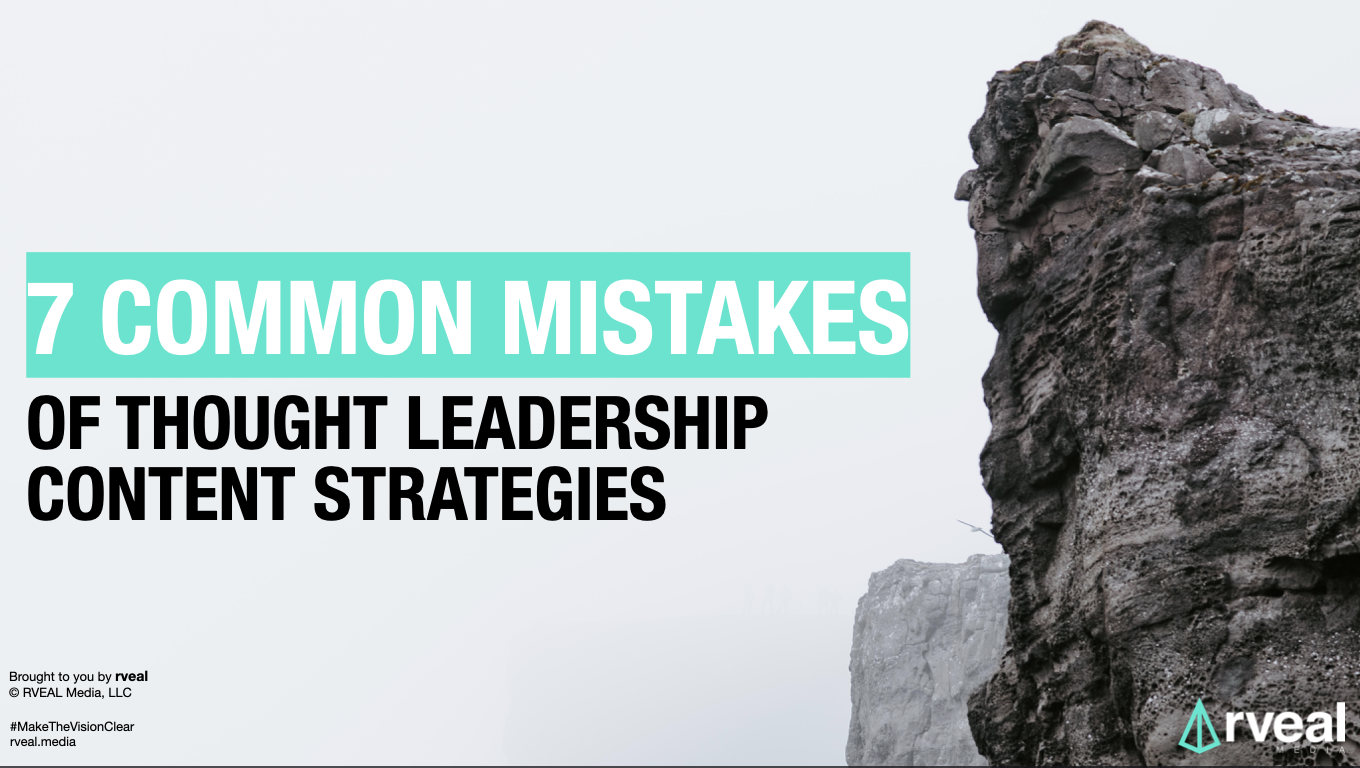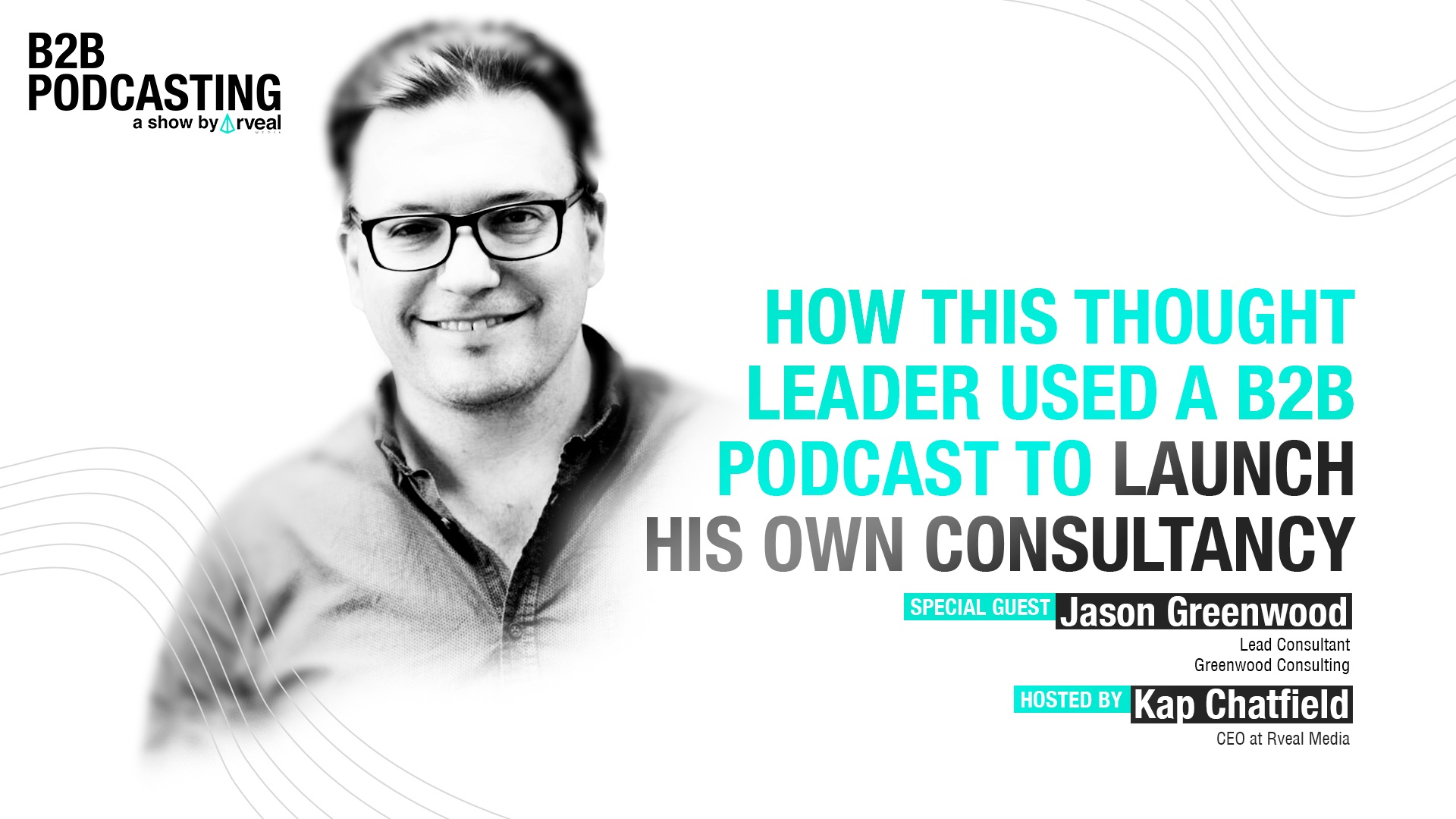7 Common Mistakes Of Thought Leadership Content Strategies

If you’re in the business of expertise, or if you’re trying to bring a product to market that solves a problem nobody knows they have yet, you know that your thought leadership content strategy is a major priority.
If you don’t know what thought leadership is, here is Edelman’s definition:
“Thought leadership material refers to content — for example, thought pieces, essays, videos, webinars, live presentations, PowerPoint slides, and research reports — that organizations make available to the public for free (or in return for registering or giving them your contact information).”
The reason why this content is so critical for B2B enterprises is that in order to win business with key decision-makers, they need to demonstrate expertise that inspires confidence.
Sounds easy, especially if you’re an expert at what you do.
However, there are also plenty of ways to sabotage your thought leadership content.
And studies show that the only thing that can damage a B2B brand’s reputation more than not publishing thought leadership is to publish poor thought leadership, poorly.
I’m going to cover a shortlist of common mistakes that thought leaders make when approaching their content - and how you can avoid these pitfalls.
If you do, don’t be surprised if you see the market begin to clamor for your expertise.
1. Your thought leadership isn’t aligned with core business goals.
If you’re not aligning your content strategy with your core business goals, you’re setting yourself up for a rough road ahead.
You’ll probably quit.
And you’re likely not going to be able to rally the rest of your organization around your point of view.
But by focusing on the organization's goals, you can then reverse-engineer a content strategy that reflects those goals. This will instill confidence in your team that this content strategy is a valuable use of everybody’s time.
Here's how you can avoid it:
- Clearly define and simplify your organization's growth goals (it can be an annual or even a quarterly goal, but it'll work best with an annual goal since your content strategy should be a long-game play anyway)
- Determine the KPIs you will track to measure success toward this goal
- Verify that the rest of your team is in alignment with this goal and these metrics
- Reverse-engineer a messaging/content strategy to help position yourself (read: your company) as the expert in your industry so you reach that goal
2. Your thought leadership content doesn't have a unique point of view.
If you're just repeating what everybody else in your industry is saying, you're not leading. You're following.
And this is one of the key distinctions between content marketing and thought leadership.
Content marketing typically just reframes what are commonly known best practices/perspectives in order to drive more traffic to a company's website.
However, thought leadership doesn't create for the sake of driving up metrics.
It creates for the sake of making an authoritative claim.
If your point of view isn't unique and groundbreaking (and, frankly, doesn't invite pushback from other people in your field), you're not taking the risks necessary to truly be a thought leader.
Here's how you can avoid it:
- Be aware of what other thought leaders in your industry are saying (subscribe to their email newsletters, read their LinkedIn content every week, etc.)
- Take notes of what elements of their POV you're impacted by and what you would refine
- Read the comments of those LinkedIn posts and see how their followers are adding to the conversation (whether positively or negatively). Identify where there is an opportunity to present a more polished perspective that serves these people
- Be controversial (but don't read "abrasive"). Say something you truly believe that isn't the norm. Controversy turns heads. Controversy transforms industries.
3. Your thought leadership doesn’t resonate with your audience
Here's the tension: you’re trying to deliver a solution to the market that your audience doesn’t even have language for yet typically.
That's obviously a competitive advantage to you and the narrative you're crafting because nobody else is fighting to claim a stake of dominance in the same territory of expertise.
However, you don’t want to compromise that, but you still want to make sure you’re connecting with your audience.
Here's how you can avoid it:
- Do some high-level keyword research to see what questions your audience is searching for answers for, either in Google or YouTube
- Spend time understanding your audience by listening to them in online communities, social media groups, customer reviews, etc. It doesn’t take a ton of work to do some of this research.
- Then, reverse engineer a strategy that helps connect them with their desires through the framework of your vision
4. Your thought leadership is too salesy
Your thought leadership strategy is precisely the opposite of a sales pitch.
You’re presenting an idea, not selling a product.
And the more your presentation feels like a sales pitch, the quicker people are going to turn away.
When you try to sell to your audience out the gate, they will feel like they need to play defense in order to keep you from scoring on them.
And, let's be honest, it's way more fun to play offense than defense.
Here's how you can avoid it:
- The key is to make your audience feel like they're playing offense. You do this by making them feel like they're in control of the conversation simply by rewarding them with the content that they actually intended to consume. Provide remarkable value for free and don't bait and switch them.
- Include subtle calls-to-action at the end of your content so that your audience at least knows how they can take the next appropriate business step with you. This way, you're continuing to build trust while also giving your audience an opportunity to do business with you.
5. Your thought leadership has an elitist tone
People want to be led. They don't want to be talked down to.
Too many thought leaders feel like they need to be brash with their tone in order to prove their dominance.
Maybe it works from time to time, but I've also seen this bravado approach shoot them in the foot.
So be careful about your tone and your messaging. The best leaders, after all, are servants.
Here's how you can avoid it:
- Don't think about yourself as the hero of your audience's story. Instead, think of yourself as the guide who has simply gone up the mountain a few times already. You know the best shortcuts to take and the dangers to avoid. Be helpful, not haughty.
- In your content, don't be afraid to literally say, "I don't know," or "I"m still figuring this out." Admitting that you haven't arrived will make you more believable as a thought leader.
6. Your thought leadership content is shallow
Most C-suite leaders are gold mines of expertise and grow comfortable firing from the hip with their input.
But oftentimes, this overconfidence sniffs them out.
Audiences can tell when "thought leaders" aren't prepared with their content or that they haven't thought it through thoroughly.
Here's how you can avoid it:
- If you want to be known as a thought leader in your industry, you must make routine time to sharpen your skills, to learn, and to deepen your expertise. It's the only way to refine the dull edges of your thinking and to reinforce your groundbreaking unique perspective.
- Cite sources. That's it. The more you can include other people's work in yours, you're showing the paper trail for where you get your thinking from. You're showing that you're not just pulling ideas out of thin air, but you're connecting dots from other masters.
7. Your thought leadership content isn’t repurposed into micro formats
This one is really tactical, but it's insanely important.
Because what's the point of great thought leadership content that nobody actually consumes?
Most thought leadership content strategies fail because of a poor distribution strategy.
Thought leaders put a 60min webinar or a keynote on their website, but they don't deploy any meaningful strategy to move traffic to watch the full content.
And especially when thought leaders are trying to reach C-suite decision-makers with their expertise, they fail to remember that these leaders have almost no time in the day to watch a 60min video.
If only they had broken up their thought leadership content into captivating, helpful micro content...
Here's how you can avoid it:
- Next time you work on a massive slide deck, take your top quotes, stats, and infographics and turn them into single posts for LinkedIn. Or the next time you publish a 60min keynote speech, pull 30sec - 3min video clips from the speech and share those on Linkedin. Tag the people in your industry that inspired you to say what you said on stage. Share the content directly with your colleagues in their direct messages and ask for their feedback. More often than not, these pieces of micro content will capture the attention of your desired audience and will even lead them to consume the full piece publication.
That's all I got for today. Thanks for reading!
-Kap


